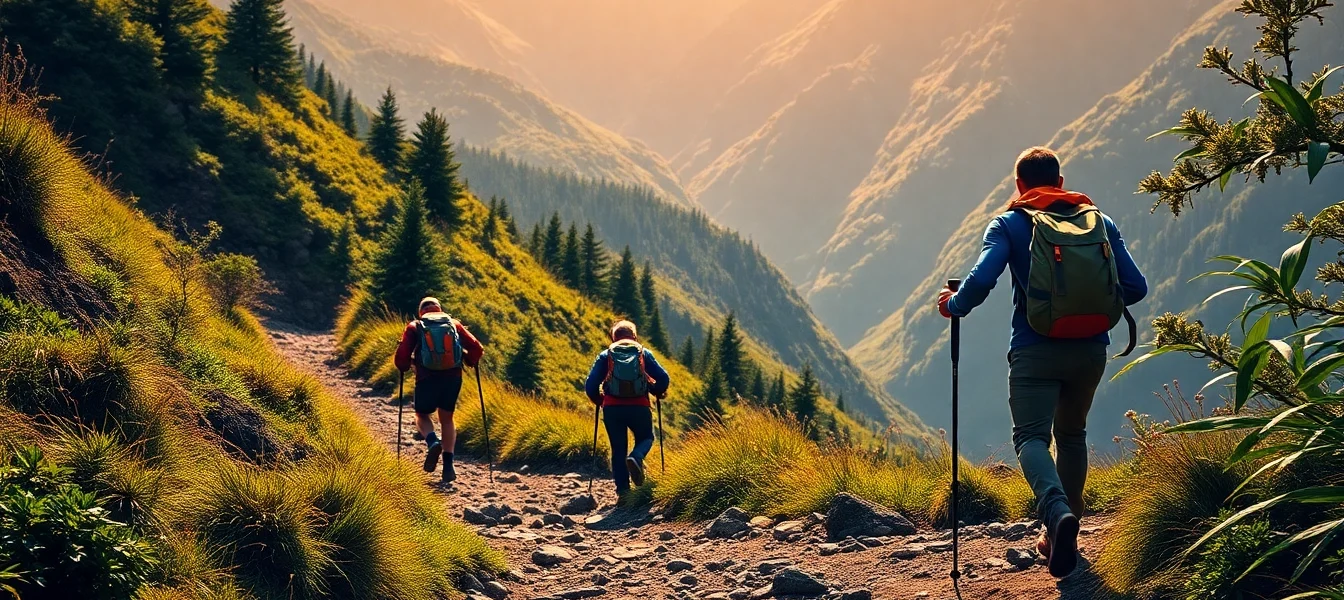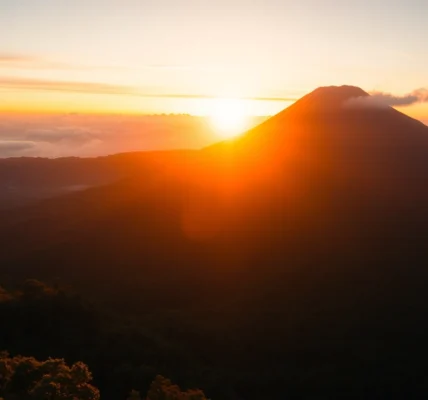Mastering Hiking in Indonesia: Expert Tips and Scenic Trails for Every Adventurer
Understanding Hiking: Definition, Benefits, and Types in Indonesia
Hiking is more than just a recreational activity; it is an immersive outdoor pursuit that combines physical fitness, mental well-being, and a deep connection with nature. Whether you’re a seasoned adventurer or a curious newcomer, understanding the nuances of hiking can significantly enhance your experience. In Indonesia, a country blessed with diverse landscapes, hiking offers unique opportunities to explore lush forests, towering mountains, and pristine beaches. If you’re eager to discover the best hiking spots and learn how to prepare for your adventures, this comprehensive guide will walk you through everything you need to know.
To start exploring this exciting activity, you can learn more about it via hiking, which opens up a world of scenic trails, cultural encounters, and health benefits—all in the heart of Indonesia’s natural heritage.
What is Hiking and How Does It Differ from Trekking?
At its core, hiking involves walking on designated trails or footpaths in natural environments, often for leisure, exercise, or exploration. Unlike casual strolls, hiking typically encompasses sustained periods of vigorous walking over varied terrains, occasionally demanding physical stamina and navigational skills. In essence, hiking promotes a leisurely yet active interaction with nature, and its popularity has grown worldwide, including in Indonesia, where many scenic trail routes await discovery.
Conversely, trekking is considered a more intense, multi-day activity that often involves traversing remote and rugged terrains with a focus on adventure, endurance, and sometimes cultural expedition. Trekkers usually carry their own supplies, camp overnight, and face tougher environmental challenges. While both share similarities, the primary distinction lies in duration, complexity, and physical demands: hiking is generally shorter and less strenuous, making it accessible for beginners, whereas trekking demands comprehensive preparation and physical endurance.
The lines between hiking and trekking sometimes blur, but understanding these differences helps in choosing trails suitable for your skill level and goals. For example, a day hike in the lush forests surrounding Mount Rinjani would differ significantly from a week-long trek across remote jungle terrains in Indonesia’s interior.
For further insights, read the detailed comparison in this article.
Health and Mental Benefits of Hiking in Nature
Engaging in hiking offers profound physical and psychological benefits. The physical activity involved in walking over natural terrains improves cardiovascular health, enhances muscular strength, and boosts endurance. According to the U.S. National Park Service, regular hiking can significantly contribute to weight management, bone density, and overall fitness levels.
Beyond physical health, hiking has been shown to alleviate stress, reduce symptoms of depression and anxiety, and improve mental clarity. The calming effect of being immersed in nature fosters mindfulness, encourages resting of the mind, and helps reconnect individuals with their environment. These mental health benefits are especially pertinent in today’s fast-paced world, where digital overload often leads to burnout.
In Indonesia, where biodiversity and scenic landscapes abound, hiking provides a natural therapy for mental rejuvenation. Activities such as trekking to Mount Bromo or exploring the rice terraces in Bali allow travelers to disconnect and rejuvenate amidst breathtaking settings.
Moreover, studies suggest that spending time outdoors enhances mood, boosts immune function, and increases overall life satisfaction. So, incorporating hiking into your routine can lead to a healthier, happier lifestyle.
Types of Hiking Suitable for Beginners and Experts
Hiking for Beginners
For newcomers, choosing accessible routes with gentle inclines and well-maintained trails is essential. Beginners should focus on shorter hikes, such as scenic walks in local parks or nature reserves. Equipment requirements are minimal; comfortable footwear, water bottles, sun protection, and a basic map or GPS are usually sufficient.
Intermediate and Advanced Hiking
Experienced hikers often seek more challenging terrains, such as mountain ascents, multi-day expeditions, or trails with technical sections. These hikes demand specialized gear—such as high-quality hiking boots, trekking poles, and navigation tools—and require solid route planning, knowledge of weather patterns, and safety precautions.
Indonesia boasts a range of landscapes suitable for all levels. Beginners might enjoy hikes through the lush jungles near Bali’s waterfalls, while experts can challenge themselves with summiting the volcanoes of Java or tackling the remote trails of Sulawesi.
To determine your skill level, always consider trail difficulty ratings, altitude, distance, and your physical condition. Local guides and ranger stations can help recommend suitable routes.
Preparing for Your Indonesian Hiking Adventure
Essential Equipment and Gear for Hiking Trails
Proper preparation is critical to ensure safety and enjoyment. Basic gear includes durable, waterproof hiking boots, moisture-wicking clothing, a wide-brimmed hat, sunglasses, and a backpack with essentials. High-quality maps or GPS devices can aid in navigation, especially on less-marked trails.
Additionally, packing lightweight, non-perishable food, sufficient water, a first aid kit, sunblock, insect repellent, and multi-purpose tools are indispensable. For longer or remote hikes, carrying a portable stove, extra clothing, and emergency shelter may be necessary.
Choosing the Right Trails and Difficulty Levels
Selecting the appropriate trail depends on your fitness, experience, and interests. In Indonesia, popular beginner-friendly trails include Bali’s Campuhan Ridge Walk or the Sendang Gile Waterfall trek in Lombok. More rigorous hikes, such as Mount Rinjani, require extensive training and gear.
Use reputable sources like local park authorities, trekking agencies, and community groups to assess trail conditions and difficulty ratings. Always check recent trail reports for weather and accessibility updates.
Safety Tips and Leave No Trace Principles in Indonesia’s Outdoors
Safety is paramount. Inform someone about your itinerary, carry a communication device, and be aware of local wildlife and environmental hazards. Maintain awareness of weather changes, especially in mountainous terrains where conditions can shift rapidly.
Embrace “Leave No Trace” principles—pack out all trash, avoid damaging flora or fauna, stay on designated trails, and respect local cultures. Protecting Indonesia’s pristine environments ensures future generations can enjoy the same natural beauty.
Top Hiking Destinations in Lombok and Surrounding Areas
Iconic Trails and Hidden Gems in Lombok
Lombok is renowned for its stunning landscapes and accessible yet rewarding trails. The ascent of Mount Rinjani, Indonesia’s second-highest volcano, offers a challenging multi-day adventure with panoramic crater views and hot springs. For a less strenuous experience, the Tiu Kelep Waterfall trek or exploring the lush forests around Senaru provide beautiful scenery and cultural insights.
Best Seasons and Conditions for Hiking in Indonesia
Indonesia’s tropical climate influences hiking conditions. The dry season, typically from May to September, offers the most favorable weather for outdoor activities—clear skies, minimal rain, and cooler temperatures. Visiting during these months maximizes safety and trail accessibility.
Local Culture, Tips, and Etiquette for Hikers
Respect for local customs and environments enhances your experience. Engage politely with indigenous communities, seek permission before photographing residents or sacred sites, and support local businesses. Learning basic Bahasa Indonesia phrases can also foster goodwill.
Maximizing Your Hiking Experience
Tips for Sustaining Energy and Nutrition on the Trail
Maintaining energy levels is vital. Consume high-carbohydrate snacks like nuts, dried fruit, and energy bars regularly. Stay well-hydrated by drinking plenty of water—an active hiker can need up to 3 liters per day in tropical climates. Consider electrolyte supplements for longer treks.
Capturing Memorable Moments and Photography Tips
Photography enhances your hiking memories. Use a lightweight camera or smartphone with a portable tripod for stability. Sunrises, waterfalls, mountain vistas, and local wildlife provide perfect photo opportunities. Early mornings and golden hours yield the best lighting.
Post-Hike Recovery and Sharing Your Adventure
After the hike, take time to stretch, rehydrate, and eat nutrient-rich meals. Sharing your journey on social media or travel community platforms inspires others and encourages conservation efforts. Documenting with photos and stories can also serve as a personal motivator for future adventures.
Building a Community and Growing Your Hiking Skills
Joining Local Hiking Groups and Events
Connecting with fellow hikers enhances safety, knowledge, and enjoyment. In Indonesia, many regions host organized hikes, workshops, and cultural exchanges. Groups like Lombok Hiking Community or Bali Outdoor Enthusiasts offer guided trips and social events for all skill levels.
Structured Training Plans for Outdoor Enthusiasts
Progressively building endurance is key. Incorporate cardio workouts, strength training, and flexibility exercises into your routine. Practice hiking with loaded backpacks to simulate real conditions. Many organizations also provide training programs tailored to local terrain challenges.
Contributing to Conservation and Respecting Nature
As a hiker, you become an ambassador for environmental preservation. Participate in trail maintenance, volunteer programs, and educational initiatives. Supporting sustainable tourism and respecting biodiversity ensures the longevity of Indonesia’s pristine outdoor spaces.

